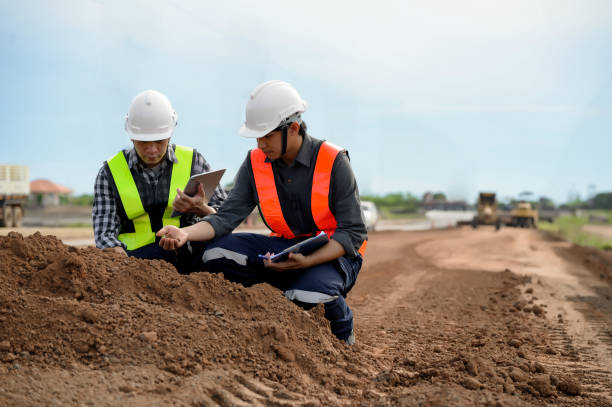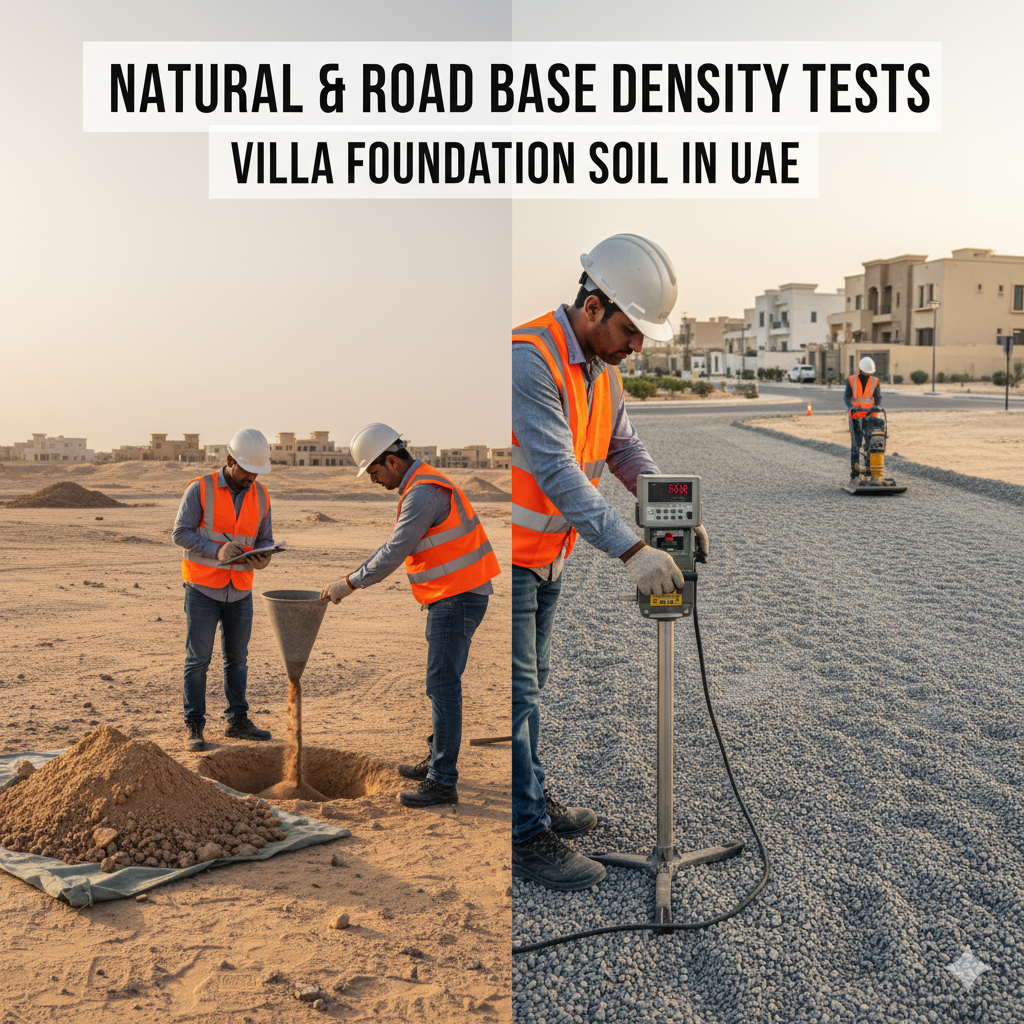Understanding Density Tests in Civil Engineering (FM UAE)
One of the most important aspects in any civil engineering project is ensuring that the soil and backfill beneath your foundation are compacted properly.
I often say — even the strongest concrete needs solid ground to stand on.
That’s where density tests come in.
Density testing helps us verify how well the soil or road base has been compacted before construction proceeds. A poorly compacted base can lead to settlement, cracks, or even structural failure later.
What is a Density Test?
A density test determines the compactness of the soil or material layer at a specific depth. It’s basically checking whether the layer beneath your foundation is strong enough to carry the load.
Two types of tests are generally required:
- Natural Density Test – Conducted on natural soil below the foundation level.
- Road Base Density Test – Conducted on road base material used for backfilling and leveling.

Why is the Density Test Important?
- Ensures that the foundation rests on soil with adequate bearing capacity.
- Helps confirm the compaction percentage meets the design requirement (usually above 95%).
- Prevents settlement and foundation movement.
- Required by Fujairah Municipality before footing casting.
The Proctor Test (Laboratory Reference for Density Test)
Before performing a site density test, the Proctor Test (Lab Test) determines the maximum dry density (MDD) and optimum moisture content (OMC) of the soil or material.
These lab results are what you compare your field density results with.
- Standard Method: BS 1377 Part 2 (for Proctor Test)
- Purpose: To find the ideal moisture content at which soil achieves maximum compaction.

Natural Density Test Below Foundation
When your excavation depth is written as 1.5 m in the Site Visit Report, it means the natural soil at -1.5 m level must be tested before laying any blinding or footing.
– Test Method:
BS 1377 Part 9 CL. 2.2 – Sand Replacement Method
Short Explanation:
A small hole is dug at the test level, the excavated soil is weighed, and the hole is filled with calibrated sand. The volume of the hole is measured to calculate the in-situ density.
– Documents Required for Natural Density Test
To apply through Fujairah Municipality (FM), prepare the following:
- Request Form (FM Website)
- Building License / Permit
- Site Plan
- Site Visit Report
- Site Handover Form
- Setting Layout
- Tie Beam Layout Drawing
– Filling the Fujairah Municipality Density Test Request Form
Here’s how I usually fill it out for a Natural Density Test Below Foundation:
| Field | Example Entry |
|---|---|
| Lab Ref No. | As per Site Visit Report |
| Contractor / Consultant | Your firm details |
| Excavation Area | Ground Floor Area |
| Project Name | G+1 / G+1+CW |
| Material Description | Natural |
| Source of Material | Natural |
| Project No. | Building Permit No. |
| Location | Below Foundation |
| Test Layer | Natural |
| Test Level | -1.5 m |
| Sampling Method (Proctor) | ASTM D75 |
| Sampling Method (Density Test) | BS 1377 Part 9 |
Also attach 4–5 pictures of the well-compacted site area where the test will be conducted.
– Online Submission to Fujairah Municipality
Go to Fujairah Municipality Portal → Soil Test → Density Test, then fill in:
- Sample Description: Natural
- Structures: Below Foundation
- Excavated Area: (same as request form)
- Soil Report No: (Site Visit Report Ref. No.)
- Layer of Testing: Natural
- Test Method: BS 1377 Part 9
- Format Type: AASHTO
- Location: (add site name + below foundation)
- Source of Sample: Natural Soil
- Proctor Test Method: BS 1377-2
Upload all the documents and photos, submit, and wait for 24 hours for the payment receipt. Once payment is done, FM will collect the soil sample from your site.
– What to Expect in Results
- Proctor Test Results will show MDD (Maximum Dry Density) and OMC (Optimum Moisture Content).
- Density Test Results will show % Compaction = (Field Density / MDD) × 100.
- Usually, compaction above 95% is required to proceed with foundation concreting.
Road Base Density Test
Once the natural layer is approved and you’ve filled 250 mm of road base, you need to apply for Road Base Proctor and Density Tests.
The process is same as above, except the following details change:
| Field | Example Entry |
|---|---|
| Material Description | Road Base |
| Source of Material | Road Base |
| Test Level | -1.25 m (since road base filled over -1.5 m excavation) |
Test Methods remain:
- Proctor Test: BS 1377-2
- Density Test: BS 1377 Part 9
Expected Results
- Compaction requirement for Road Base: 98% and above.
- Report will mention Field Density, MDD, and % Compaction.
- Once the layer passes, you can proceed to Blinding Concrete or Subgrade Preparation.
Below Grade Slab Density Test
After foundation and tie beams are done, a Below Grade Slab Density Test is mostly required.
The Site Visit Report will mention the Foundation Level from Zero (Gate Level) and Available Bearing Capacity (in tons/m²).
Always ensure test levels are matched with these values for compliance.
Final Thoughts (Engineer Adeel Arif’s Note)
As a site engineer, I’ve learned that accuracy in documentation and levels is as important as the testing itself.
Even a 0.25 m mistake in depth (like -1.5 vs -1.25 m) can cause your test to be rejected by FM.
Always:
- Match test levels with site visit report.
- Attach clear site photos.
- Double-check proctor reference and test method.
These steps ensure that your project moves smoothly and meets municipality approval standards.

Leave a Reply